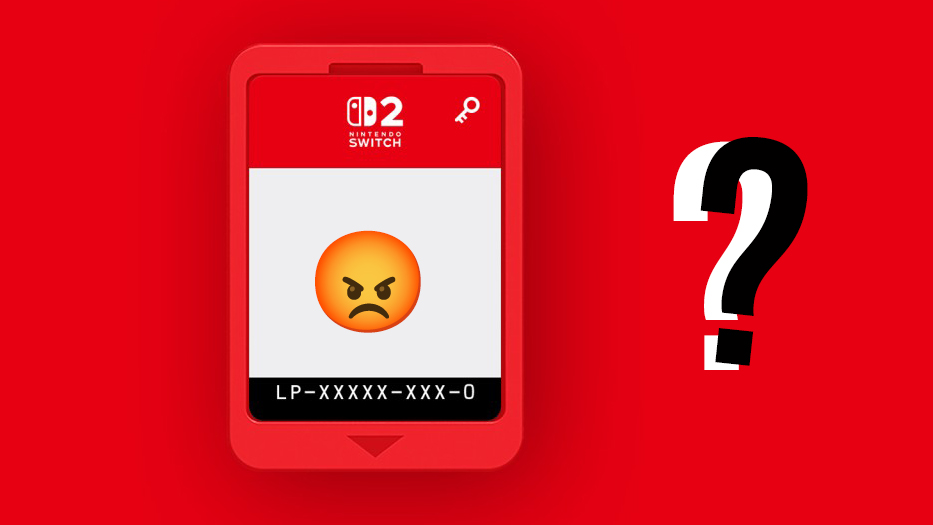MacBook Pro 13" vs MacBook Pro 16": Which one should you buy?
It's size versus performance – will the MacBook Pro 16" or the MacBook Pro 13" get the job done for you?
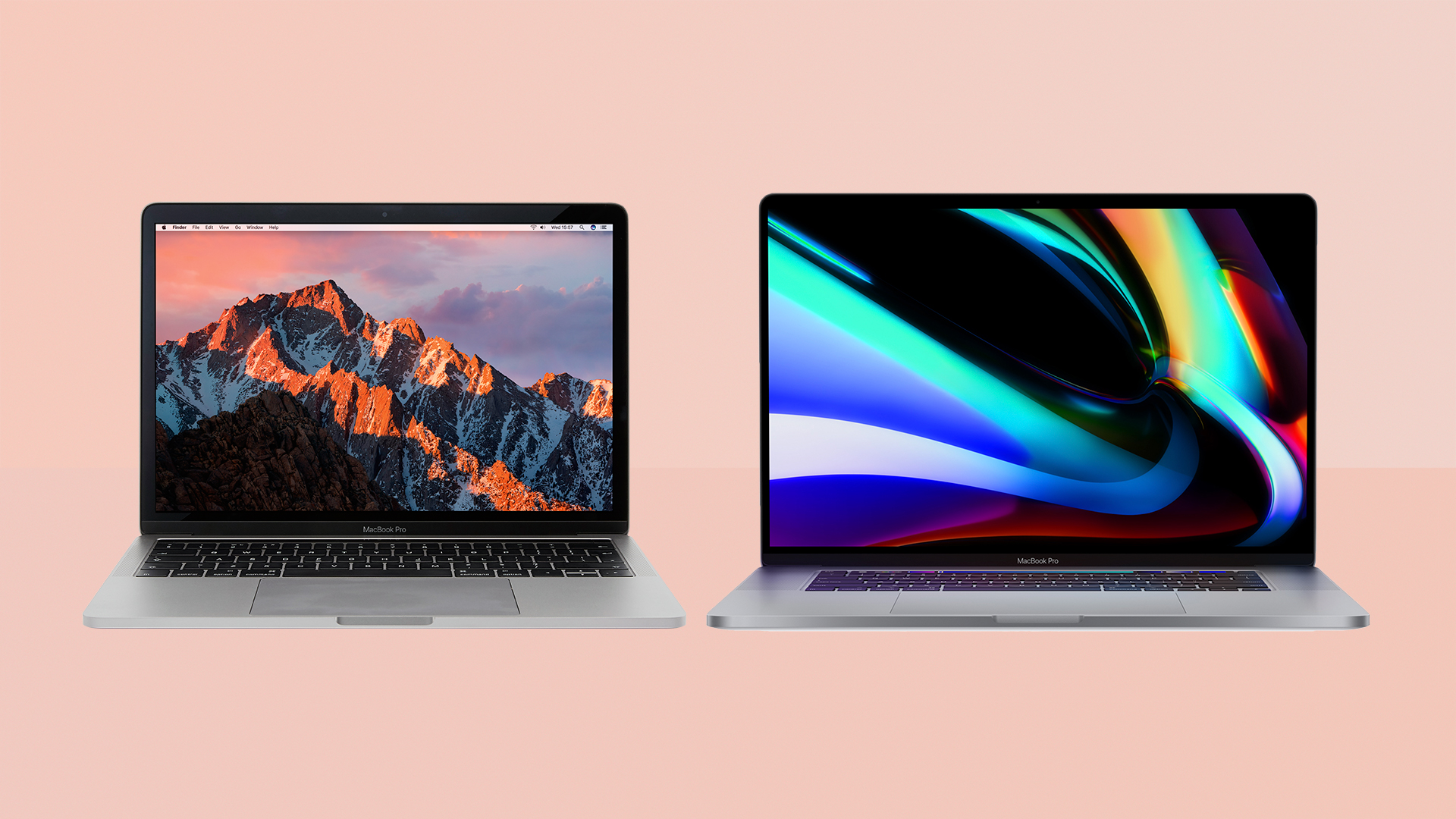
The new Apple MacBook Pro 16" is the first new size of laptop from Apple in years – since the now-defunct 12" MacBook, in fact. Overnight, it has replaced the 15" MacBook Pro in Apple's lineup, meaning that the only two size options for portable Macs now are the MacBook Pro 13" and the MacBook Pro 16".
Being of the same family, the two laptops are obviously very similar, including lots of speed, top-tier screens, reliability, and a focus on being as small and lightweight as possible – reasons that Mac laptops have been staples for creative pros for so long.
Despite the similarities, there are seemingly small differences in the design, and potentially big differences in the power, that could be the decider for creative pros when working out which of the two laptops to buy.
That why we've put the two sizes of Apple laptop head to head here, to help you nail down which option is the best choice for you. (If you're looking for other alternatives, then see our best laptops for graphic design buying guide).
MacBook Pro 13" vs MacBook Pro 16": Performance
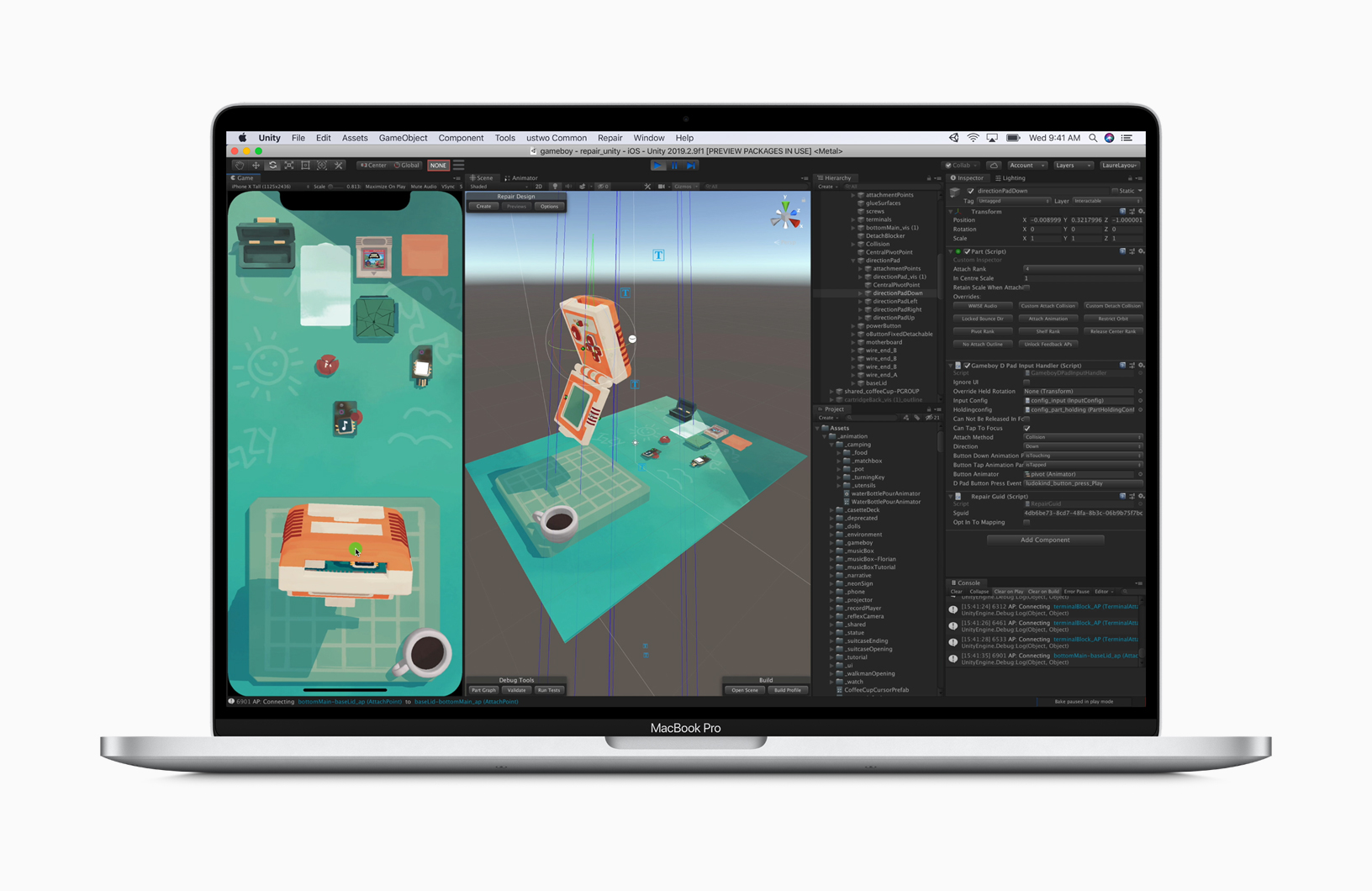
This, along with the screen (which we'll talk about shortly), is the big difference between the two machines. Though the two are equally fast at the little stuff, such as launching lighter apps, when it comes to raw power for high-end software, the 16" model offers more head-room – more than you may need, in fact.
The MacBook Pro 13" comes with an Intel Core i5 quad-core processor, at 1.4GHz in the cheapest version ($1,299/£1,299). There's also a $1,799/£1,799 version that features a much faster 2.4GHz quad-core chip. These processors are HyperThreaded, which means they can act as eight cores (though without the full performance a real eight-core processor can manage). There's also the option to custom configure a model with a faster-still 2.7GHz Intel Core i7 processor.
The MacBook Pro 16" comes with a six-core 2.6GHz Intel Core i7 processor as standard in the cheaper ($2,399/£2,399) model, which is also HyperThreaded, so can act as 12 cores. You might guess that this would be about 50 per cent more powerful than the MacBook Pro 13", and in practice it really can be for tasks that really tax the processor, such as complex file exports or software compiling.
Get the Creative Bloq Newsletter
Daily design news, reviews, how-tos and more, as picked by the editors.
And then there's the higher-end MacBook Pro 16", which comes with an eight-core 2.3GHz Intel Core i9 for $2,799/£2,799. And yes, that can act as 16 cores.
The fact that the 13" models top out at quad-core, while the 16" models start at six-core, means that for some users, the decision of which one to get takes care of itself. Live 4K playback while editing is possible on the 13" model, but for 6K or 8K, you'll need the bigger one. If you need to compile large and complex software on more cores, you'll need the bigger one – it will save you time, and therefore money.
The difference is similarly stark when it comes to graphics performance. The MacBook Pro 13" uses integrated Intel Iris graphics, which are capable enough for lots of work, but don't include proper dedicated VRAM, and can't really be considered 'pro'.
The MacBook Pro 16" uses AMD's 5000M series graphics chips, which come with 4GB of dedicated GDDR6 memory as standard, so they can take some reasonably heavy workloads. And you can configure the bigger machine with a GPU that includes 8GB of memory, if you're really planning to push the 3D or visual effects apps.
Speaking of memory, the RAM options might make your decision for you too. The MacBook Pro 13" comes with 8GB of memory as standard across all models, though this can be configured to 16GB, but that's the max. 8GB is fine for a standard user, but it doesn't take long to hit when you've got Photoshop CC and Lightroom open, and especially not when you're editing video. 16GB is more reasonable for creative pros, but can still be really limiting when working on multi-layered creations.
The MacBook Pro 16" comes with 16GB of RAM as standard, but can also be configured to 32GB or even 64GB, which is a first for Apple laptops. So for some pros, this alone will mean they need to go for the big model – but even if you think 16GB would probably be enough, it's worth considering future-proofing, because the RAM in these machines cannot be upgraded down the line. Being fine with 16GB now doesn't mean you will be in a couple of years, so we absolutely recommend playing it safe and upgrading to 32GB.
MacBook Pro 13" vs MacBook Pro 16": Design
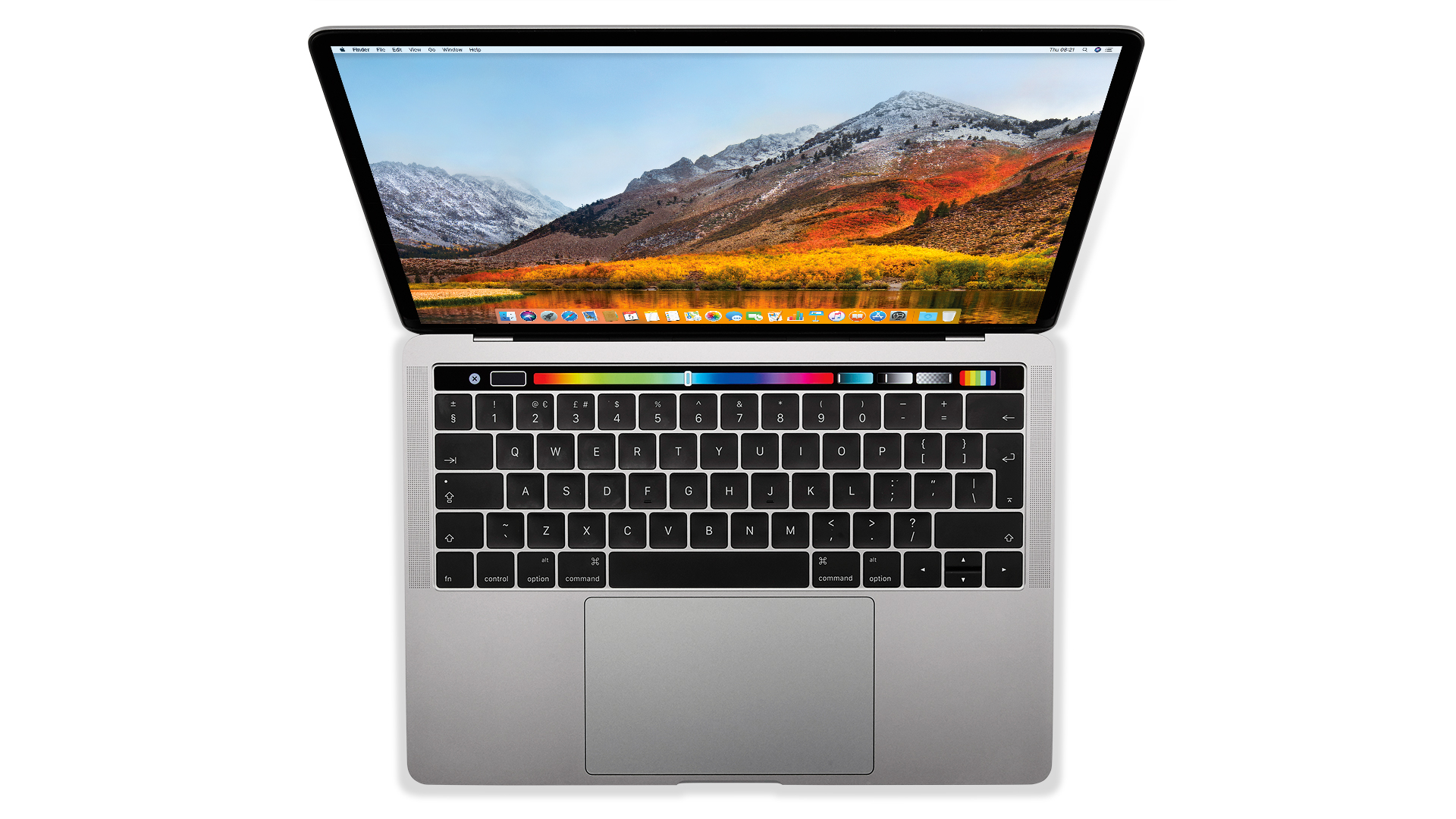
The current design of Apple's laptops has been set for a few years, and it's very similar across the two models here. They come in silver or a darker grey, and feature straight, clean lines of unbroken aluminium.
The new MacBook Pro 16" model has some very small tweaks to this formula: specifically, it has thinner bezels around the screen, so that the move from a 15" screen to a 16" one in the bigger model doesn't increase the size by much (around 2 per cent, in fact).
Both models have generously sized trackpads that dominate the space beneath the keyboard, and the 16" model has big empty sections on the left and right of the keyboard, unlike the 13" model – a result of them having roughly the same-sized keyboard.
These include the new speakers, which are exclusive to the bigger machine, and are pretty amazing. Using four woofers and two tweeters, the sound is like a solid pair of (small) external speakers, and doesn't vibrate through the machine so dramatically, because Apple uses drivers in opposition to each other, cancelling out a lot of unwanted vibration. They're extremely impressive, though we imagine most people will stick with headphones or proper monitors in most situations still anyway.
Both models are pretty thin and light for this class of laptop – the 16" model is obviously still bulky, but considering the screen real estate you get compared to other 15" machines (or even 17" laptops), it's a fairly compact laptop.
The 13" model is 30cm wide, 21cm deep, and 1.5cm thick when closed, and weighs 1.37 kg. The 16" model is 35cm wide, 24cm deep, and 1.62cm when closed – it's not a small amount of extra footprint overall, but really isn't that egregious for its size, especially for a bigger-than-15" screen. It weighs 2kg.
MacBook Pro 13" vs MacBook Pro 16": Display
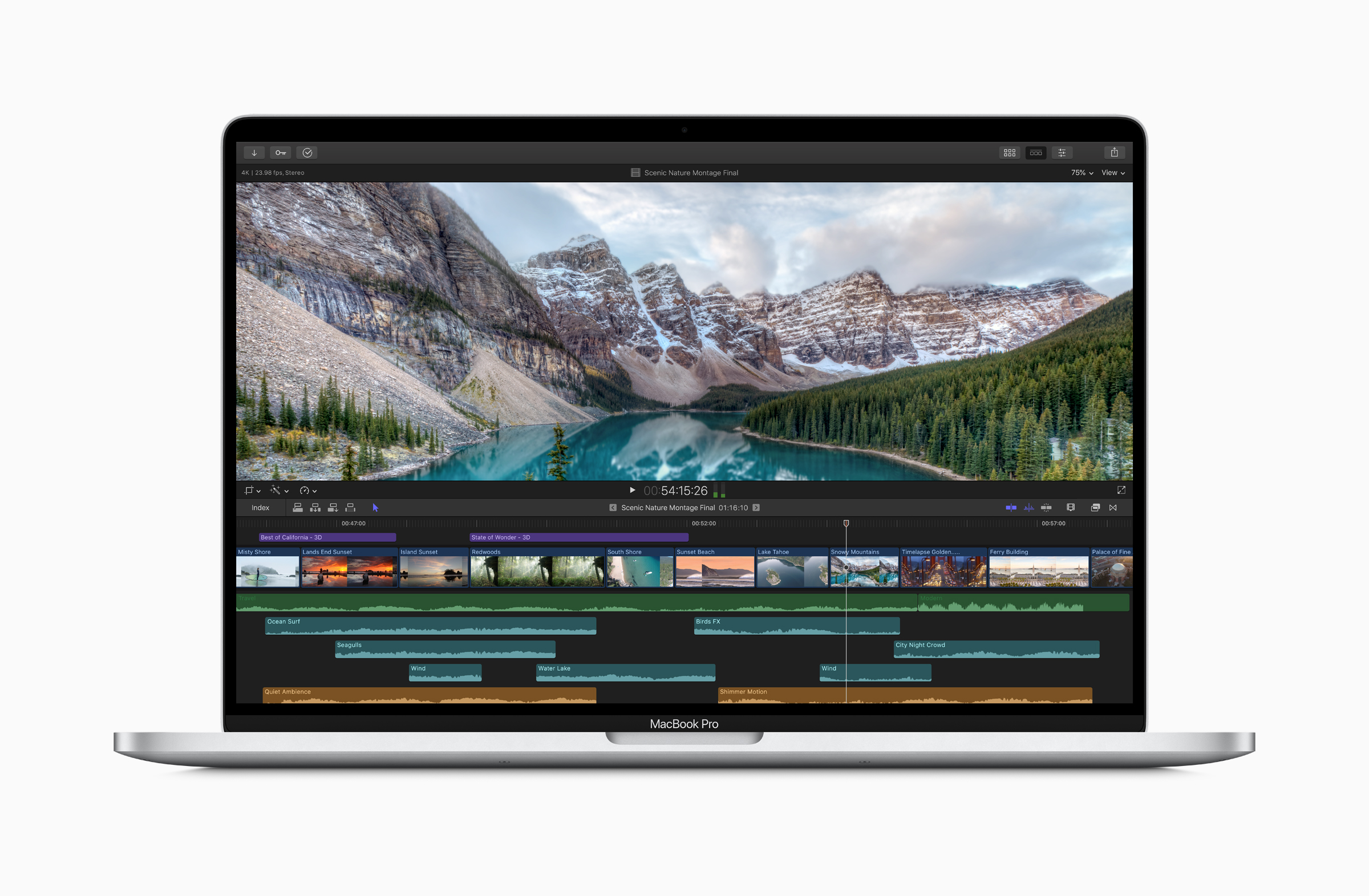
The MacBook Pro 16" has, of course, a 16" display, with a resolution of 3072x1920. The MacBook Pro 13" has a 13" display with a resolution 2560x1600. That gives the both essentially identical display densities of 226 pixels per inch on the 16" model, and 227 pixels per inch on the 13" model.
This means they're both equally crisp and detailed – it's just that the bigger screen gives you more space to work on at the same quality level.
In terms of work, this means you can fit more tools on the 16" model – you could fit a Photoshop working window the size of the smaller MacBook's screen, and still have room for palettes to be open and more tools. Or there's space to have documentation open alongside the tools you're working in – there's no doubt that bigger screens give more options for productivity.
The question tends to be whether you need the extra space, and whether it's worth the trade-off for having a machine that's bulkier and heavier – and that comes down entirely to your work. For a photographer who has to move around a lot, maybe the smaller screen is detailed enough for location work, and you appreciate the lightness. For a video editor who wants something to work on during occasional time away from the main desk, the screen space is probably more valuable.
They both have a peak brightness of 500 nits, and support Apple's Extended Dynamic Range feature in apps such as Final Cut Pro, which can tweak video output to provide an approximation of what HDR video footage will look like in practice, despite the screen not being HDR rated.
Both screens support the P3 colour gamut too, so for film work or wide-colour image editing, you can get an accurate view of the final results.
Finally, both screens support Apple's True Tone tech, which adjusts the colour tone of the screen to match the ambient lightning in the room, and is much easier on the eyes when working on documents in artificial light. Those who want careful calibration will likely turn it off, but for the times when you need to blast through emails or write a pitch document, it makes these machines much more pleasant to use than competitors, or older Macs. Ultimately, then, when it comes to screens, it's just down to which size suits you best.
MacBook Pro 13" vs MacBook Pro 16": Connectivity
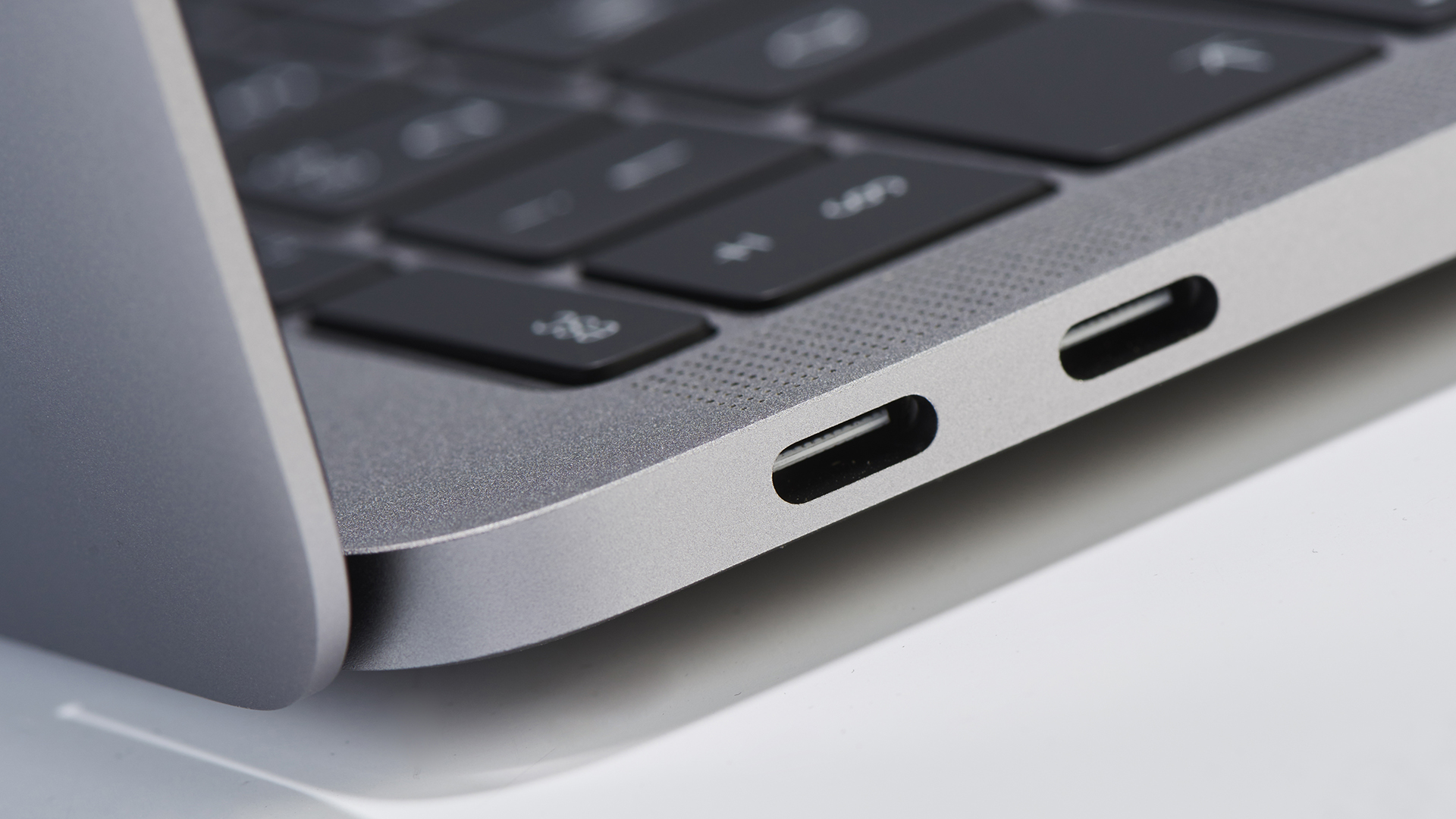
The MacBook Pro 16" comes with four Thunderbolt 3 ports – two on each side – which are basically all things to all people. As long as you've got the right adapter, these ports are fast enough to connect just about anything: 6K displays (and later, 8K, though support isn't official yet); giant RAIDs; external graphics cards for extra 3D/compute power; or even a USB stick.
They're the same type of port as USB Type-C, so anything that's USB Type-C works with them too, including docks (though USB Type-C docks can be hit and miss in terms of seamless support – be sure to research carefully before buying one for mission critical work).
These are the only four ports on the MacBook Pro 16", apart from the 3.5mm headphone jack. Even the power goes through them, which does give you the nice option of being able to charge on either side of the machine. It also means it's easy to power the machine through a hub, using a single cable – great for people who need to grab their laptop and go at a moment's notice.
The MacBook Pro 13" also relies solely on Thunderbolt 3 ports (with the headphone jack again), but how many you get changes depending on the model you go for. There are three basic Apple options for the MacBook Pro 13", and the first two (starting from $/£1,299) only have two ports, situated on the left-hand side.
The higher-end model ($/£1,799) comes with four ports, making it equal to the 16" model for connectivity.
Because of the giant bandwidth of Thunderbolt 3, for most use, two ports is actually fine if you're using an external hub of some kind. However, if you're working in a way where you need to maximise throughput (8K video, or using an external graphics option, for example), then the more ports the better, to avoid any chance of bottlenecking.
Both machines have the same wireless connectivity options: 802.11ac Wi-Fi (now also known as Wi-Fi 5), plus Bluetooth 5.0. There is a new, faster wireless standard (Wi-Fi 6), but neither model supports it as yet. There's no option for having 4G (or 5G, for that matter) built into either model.
MacBook Pro 13" vs MacBook Pro 16": Storage
The MacBook Pro 13" includes 128GB of storage in its basic model, which is fine for regular users, but can't be considered a pro option, really. The good news is that you can configure the 13" machines to have up to 2TB of storage built in, which is healthy – but costs.
The MacBook Pro 16" basic version comes with 512GB as standard, while the higher-end option has 1TB. Here's the juicy part, though: you can configure these with up to 8TB of built-in storage, which gives you a ton of flexibility. It'll be a big outlay, but if you really need it, it's invaluable.
Like the RAM, storage is not upgradable in the future in these machines, so do not skimp when you buy (though the speed of Thunderbolt 3 means that using fast external SSDs shouldn't slow you down at all). If in doubt, get the next level up, because it will always be double whatever you're looking at now – plenty of room to grow.
One of the secret weapons that Apple's laptops have for high-end work is the sheer speed of Apple's storage, which is one reason to configure high levels of built-in storage rather than external. It's basically the fastest in the business, and is comfortably up to the task of 8K editing with live playback (when combined with the processing power on higher-end models), or opening large and complex files rapidly.
MacBook Pro 13" vs MacBook Pro 16": Keyboard
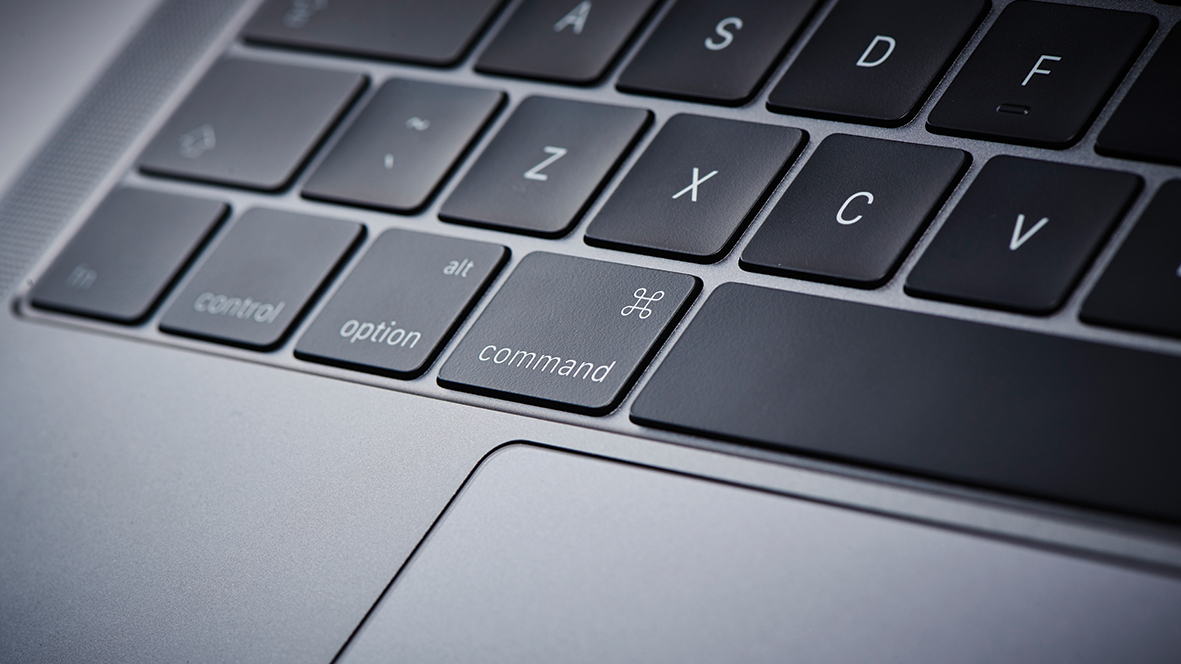
The MacBook Pro 13" uses Apple's butterfly-mechanism keyboard, which has been standard on its laptops for a few years, and has proven controversial. It's very low travel (so doesn't require much pressing to activate the keys), though it still provides plenty of feedback, and has had reliability issues – Apple has a specific repair program for replacing keyboards on these machines, in fact.
A lot of people are happy with the feel and usability of the Butterfly keyboard, but there are also lots of people who just don't like it – who prefer longer key travel, or the slightly softer feel. The reliability issue is the bigger concern, though: the keys seem more prone to getting stuck when debris makes it in, and also appear to wear out easier than other types of keyboard. This is obviously a concern on a vital professional machine.
The MacBook Pro 16" uses a 'Magic Keyboard' instead, which has a scissor mechanism, giving it longer travel, and likely fewer reliability problems – we say "likely" because we haven't been able to long-term test the keyboard, but its construction appears to be nearly identical to Apple's older keyboards, which were rock solid.
For people who need to do a lot of writing, this may well make the MacBook Pro 16" the preferred choice. As we said, it partly comes down to personal preference, but the reliability Russian roulette of the type of keyboard used in the 13" models means the bigger machine is the safer option overall.
There's another change that people have been clamouring for on the keyboard: the return of a physical Escape key. When Apple introduced the Touch Bar as a replacement for the function keys, the Escape key was rolled into that as a virtual button. But, given how often it's used in everything from IDEs to Photoshop to Final Cut to InDesign, not having an easily-found physical key was a downside.
The MacBook Pro 16" now has a physical Escape key as well as a (shortened) Touch Bar. The MacBook Pro 13" still has the longer Touch Bar, with the Escape key part of that. Both laptops have Touch ID sensors, for easy fingerprint logon, which is a nice, er, touch.
MacBook Pro 13" vs MacBook Pro 16": Battery
The new MacBook Pro 16" has the biggest battery you're going to find in any laptop in the foreseeable future: 100Wh. That's because this is the upper limit set by the USA's FAA for what's allowed on planes, and no one's going to bother with laptops that aren't allowed on planes.
Having such a huge battery is great for battery life overall, of course, though the large screen is a big drain. Apple rates it for 11 hours of light web browsing use.
The MacBook Pro 13" has a much smaller battery (58Wh), but because the screen uses significantly less power, it lasts nearly as long – it's rated for 10 hours of web browsing.
Of course, these figures are a bit pie in the sky anyway, since real-world usage varies wildly depending on which apps you have open, and what you're doing. The much beefier specs of the MacBook Pro 16" will really burn through electricity if you throw tough tasks at them, but the important part is that you've got plenty of electricity to feed them for a few hours at least.
MacBook Pro 13" vs MacBook Pro 16": Pricing
The MacBook Pro starts at $1,299/£1,299, with a 1.4GHz quad-core processor, 8GB of RAM, and 128GB of storage. This model isn't really suitable for pros – unless you're doing very light work that's heavily cloud based.
The next model up is $1,499/£1,499, and is the same except for having 256GB of storage, which is a very mild improvement.
Then there's the $1,799/£1,799 version, which has a much more powerful 2.4GHz quad-core processor, but still 256GB of storage and 8GB of RAM.
And finally there's a $1,999/£1,999 version, which is the same as above, but with 512GB of storage. You can, of course, configure these models, as we've described, for more money.
The MacBook Pro 16" basic model is $2,399/£2,399 for a 2.6GHz six-core processor, with 512GB of storage and 16GB of RAM. This is a really strong sweet spot for the whole product line – though some may need more storage and RAM, it's a solid starting point.
The final MacBook Pro 16" model is $2,799/£2,799, and includes an eight-core 2.3GHz processor, and bumps storage to 1TB, though keeps the 16GB of RAM.
Here's the problem for the 13" model: taking the $1,999/£1,999 version, with the more powerful processor and 512GB of storage as standard, then adding a RAM increase to 16GB, comes in at $2,179/£2,179. The MacBook Pro 16" basic version already has 16GB of RAM and 512GB of storage, plus a significantly more powerful six-core processor, and the bigger screen, and the more reliable keyboard… all for $220/£220 more. That seems like damn good value to us, which is why we've picked that as the stand-out option.
MacBook Pro 13" vs MacBook Pro 16": Conclusion

There's so much shared between the MacBook Pro 13" and MacBook Pro 16" that the decision comes down to two key areas: portability and power.
The bigger size of the 16" MacBook Pro enables it to fit in so much more performance than the smaller version is capable, and depending on exactly what you want to do with it, that could vital – a machine that slows down your work is liability, after all. That applies to the bigger screen, too – if it can help you work faster, it's well worth getting.
But the flip side is the extra bulk and weight. If you don't need something that's close to a portable workstation for your mobile work, and would prefer something that either takes up less space or just weighs less on the back, then the 13" MacBook Pro will work great. It's a matter of priorities – choosing which element you value more.
Price can be a factor too: the MacBook Pro 13" starts at over $1,000/£1,000 cheaper than the 16" version. But start adding more storage, RAM and power, the overall bang-for-buck rating starts to tip in the favour of the 16" model.
Read more:

Thank you for reading 5 articles this month* Join now for unlimited access
Enjoy your first month for just £1 / $1 / €1
*Read 5 free articles per month without a subscription

Join now for unlimited access
Try first month for just £1 / $1 / €1
Matt is Managing Editor at TechRadar.com, and previously worked on T3, MacLife and MacFormat. He's been testing technology for over a decade, working in specialist Apple publications as well general technology and creative journalism, and has charted Apple’s ups and downs since his student days (but still hopes to hear “one more thing”). By day, you can find him covering TV, audio, smart home gear and more at T3.com, as Home Tech Editor. By night, he's probably updating or pairing or installing some new piece of technology in the quest for the perfect setup.

